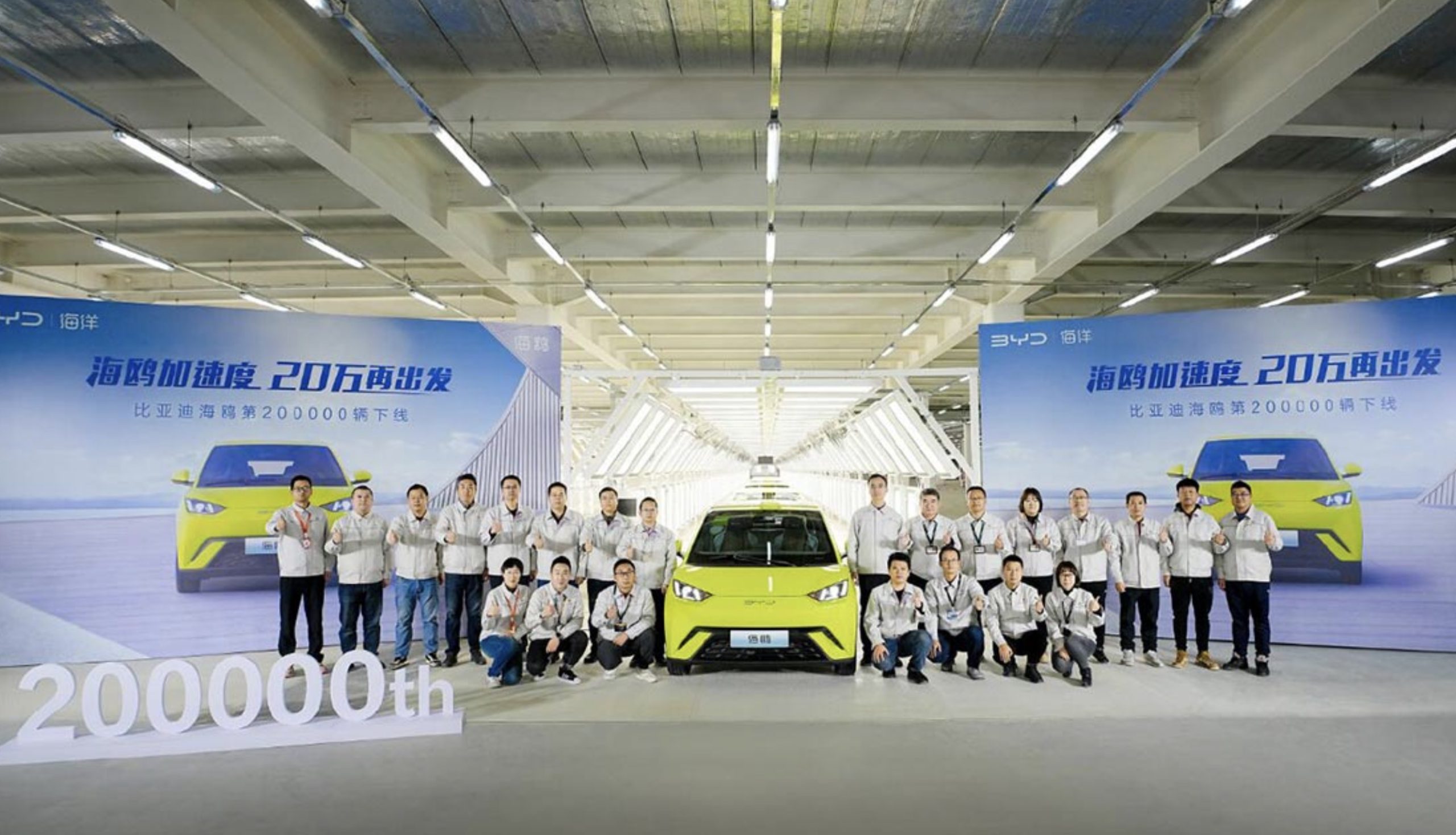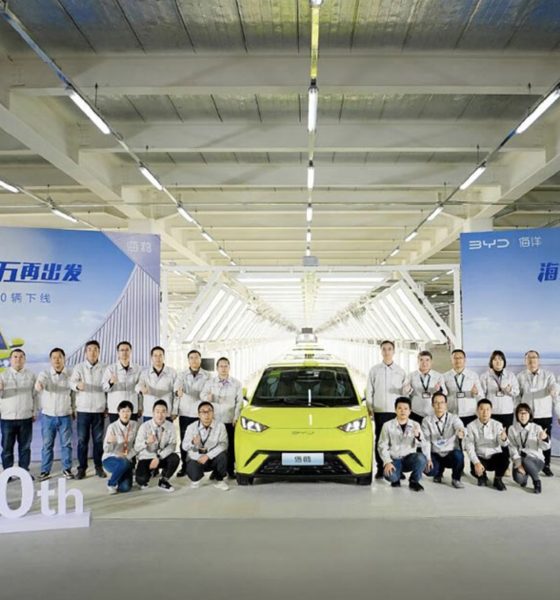China’s top new energy vehicle manufacturer, BYD, has no plans to enter the United States auto market.
BYD Executive Vice President and CEO of BYD Americas Stella Li sat down with Yahoo Finance, and talked about the Chinese automaker’s lack of presence in the US Market and the global electric vehicle (EV) market.
“Complications” in the US EV Market
Li explained BYD’s reasons for staying out of the United States EV market. The BYD Vice President alluded to complications within the United States, particularly a slowdown in the EV market.
“It’s an interesting market, but it’s very complicated if you’re talking about EV, and then I think the US market is a little bit slowdown on electrification, and there are a lot of confusing, also very complicated, so we’re saying, ‘No…we don’t have plans to come to the US,” said Li.
In late 2023, a few publications, automakers, and auto suppliers hinted that electric vehicle sales in the United States would slow down in 2024. Ford and General Motors (GM) announced plans to scale down EV production this year.
Some theorized that GM and Ford scaled back EV production plans because there was not enough demand for electric vehicles in the United States. However, some argue there is strong EV demand in the United States, just not for the electric vehicles GM and Ford offer.
For instance, Hyundai and Kia claimed to see strong demand for electric vehicles in the United States. Together, the Korean car companies came in second in EV car sales in the United States last year behind Tesla–by a large margin.
Interest rates are another factor that might be contributing to slow EV sales. LG Energy Solution warned of slow revenue growth in 2024 amid rising interest rates. Tesla CEO Elon Musk shared a similar concern in one of TSLA’s earnings calls in 2023.
“I am worried about the high interest rate environment that we’re in. I just can’t emphasize this enough: that the vast majority of people buying a car is about the monthly payment. And as interest rates rise, the proportion of that monthly payment that is interest increases naturally,” commented Musk.
United States and China Relations
Li was also asked if politics played any role in BYD’s decision to stay out of the United States.
“Everything is complicated. Politics are complicated…and its confusing for the consumer, and then they don’t know which to choose,” Li said.
The Biden Administration is working toward building an auto supply chain in the United States that isn’t entirely dependent on China or other nations. The Inflation Reduction Act (IRA) of 2022 aims to encourage companies to invest in North America or nations with US trade agreements. It also incentivizes companies to build supply chains within those same parameters.
Unfortunately, China has been labeled a foreign entity of concern (FEOC) under the IRA. Any EVs with components are not eligible for the IRA’s EV tax credits. Chinese companies with close ties to China’s national government may also get an FEOC designation.
Given the present political climate, it may not be the right time for BYD to enter the US market. However, it is not crossing off all of the Americas. BYD has invested some in South America recently and is even rumored to be looking at a sites in Mexico. One of the sites is near Tesla’s Giga Mexico.
If you have any tips, contact me at maria@teslarati.com or via X @Writer_01001101.

News
Tesla FSD fleet is nearing 7 billion total miles, including 2.5 billion city miles
As can be seen on Tesla’s official FSD webpage, vehicles equipped with the system have now navigated over 6.99 billion miles.

Tesla’s Full Self-Driving (Supervised) fleet is closing in on almost 7 billion total miles driven, as per data posted by the company on its official FSD webpage.
These figures hint at the massive scale of data fueling Tesla’s rapid FSD improvements, which have been quite notable as of late.
FSD mileage milestones
As can be seen on Tesla’s official FSD webpage, vehicles equipped with the system have now navigated over 6.99 billion miles. Tesla owner and avid FSD tester Whole Mars Catalog also shared a screenshot indicating that from the nearly 7 billion miles traveled by the FSD fleet, more than 2.5 billion miles were driven inside cities.
City miles are particularly valuable for complex urban scenarios like unprotected turns, pedestrian interactions, and traffic lights. This is also the difference-maker for FSD, as only complex solutions, such as Waymo’s self-driving taxis, operate similarly on inner-city streets. And even then, incidents such as the San Francisco blackouts have proven challenging for sensor-rich vehicles like Waymos.
Tesla’s data edge
Tesla has a number of advantages in the autonomous vehicle sector, one of which is the size of its fleet and the number of vehicles training FSD on real-world roads. Tesla’s nearly 7 billion FSD miles then allow the company to roll out updates that make its vehicles behave like they are being driven by experienced drivers, even if they are operating on their own.
So notable are Tesla’s improvements to FSD that NVIDIA Director of Robotics Jim Fan, after experiencing FSD v14, noted that the system is the first AI that passes what he described as a “Physical Turing Test.”
“Despite knowing exactly how robot learning works, I still find it magical watching the steering wheel turn by itself. First it feels surreal, next it becomes routine. Then, like the smartphone, taking it away actively hurts. This is how humanity gets rewired and glued to god-like technologies,” Fan wrote in a post on X.
News
Tesla starts showing how FSD will change lives in Europe
Local officials tested the system on narrow country roads and were impressed by FSD’s smooth, human-like driving, with some calling the service a game-changer for everyday life in areas that are far from urban centers.

Tesla has launched Europe’s first public shuttle service using Full Self-Driving (Supervised) in the rural Eifelkreis Bitburg-Prüm region of Germany, demonstrating how the technology can restore independence and mobility for people who struggle with limited transport options.
Local officials tested the system on narrow country roads and were impressed by FSD’s smooth, human-like driving, with some calling the service a game-changer for everyday life in areas that are far from urban centers.
Officials see real impact on rural residents
Arzfeld Mayor Johannes Kuhl and District Administrator Andreas Kruppert personally tested the Tesla shuttle service. This allowed them to see just how well FSD navigated winding lanes and rural roads confidently. Kruppert said, “Autonomous driving sounds like science fiction to many, but we simply see here that it works totally well in rural regions too.” Kuhl, for his part, also noted that FSD “feels like a very experienced driver.”
The pilot complements the area’s “Citizen Bus” program, which provides on-demand rides for elderly residents who can no longer drive themselves. Tesla Europe shared a video of a demonstration of the service, highlighting how FSD gives people their freedom back, even in places where public transport is not as prevalent.
What the Ministry for Economic Affairs and Transport says
Rhineland-Palatinate’s Minister Daniela Schmitt supported the project, praising the collaboration that made this “first of its kind in Europe” possible. As per the ministry, the rural rollout for the service shows FSD’s potential beyond major cities, and it delivers tangible benefits like grocery runs, doctor visits, and social connections for isolated residents.
“Reliable and flexible mobility is especially vital in rural areas. With the launch of a shuttle service using self-driving vehicles (FSD supervised) by Tesla in the Eifelkreis Bitburg-Prüm, an innovative pilot project is now getting underway that complements local community bus services. It is the first project of its kind in Europe.
“The result is a real gain for rural mobility: greater accessibility, more flexibility and tangible benefits for everyday life. A strong signal for innovation, cooperation and future-oriented mobility beyond urban centers,” the ministry wrote in a LinkedIn post.
News
Tesla China quietly posts Robotaxi-related job listing
Tesla China is currently seeking a Low Voltage Electrical Engineer to work on circuit board design for the company’s autonomous vehicles.

Tesla has posted a new job listing in Shanghai explicitly tied to its Robotaxi program, fueling speculation that the company is preparing to launch its dedicated autonomous ride-hailing service in China.
As noted in the listing, Tesla China is currently seeking a Low Voltage Electrical Engineer to work on circuit board design for the company’s autonomous vehicles.
Robotaxi-specific role
The listing, which was shared on social media platform X by industry watcher @tslaming, suggested that Tesla China is looking to fill the role urgently. The job listing itself specifically mentions that the person hired for the role will be working on the Low Voltage Hardware team, which would design the circuit boards that would serve as the nervous system of the Robotaxi.
Key tasks for the role, as indicated in the job listing, include collaboration with PCB layout, firmware, mechanical, program management, and validation teams, among other responsibilities. The role is based in Shanghai.
China Robotaxi launch
China represents a massive potential market for robotaxis, with its dense urban centers and supportive policies in select cities. Tesla has limited permission to roll out FSD in the country, though despite this, its vehicles have been hailed as among the best in the market when it comes to autonomous features. So far, at least, it appears that China supports Tesla’s FSD and Robotaxi rollout.
This was hinted at in November, when Tesla brought the Cybercab to the 8th China International Import Expo (CIIE) in Shanghai, marking the first time that the autonomous two-seater was brought to the Asia-Pacific region. The vehicle, despite not having a release date in China, received a significant amount of interest among the event’s attendees.










